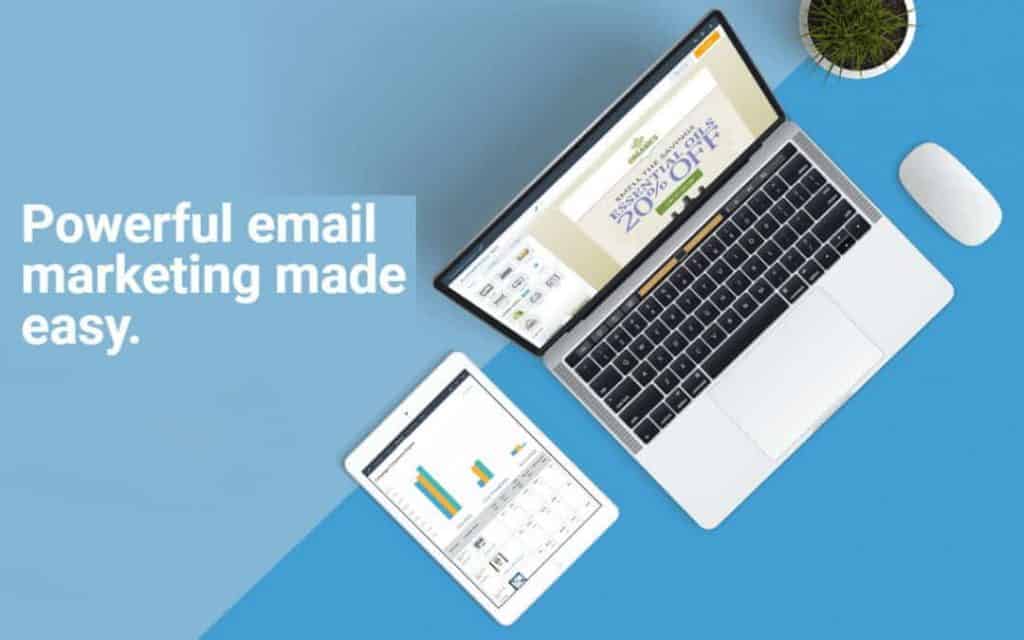Powerful Email Marketing Made Easy For The Beginners. Small businesses often get overwhelmed by email Marketing. In this article, I will explain everything from email marketing and how you can leverage it to increase your business.
So now you have your small business website and a bit of content, it’s time to start actively start some Internet marketing – to start getting people to visit your website. How do you do that?
One of the most powerful options is email marketing, and this is where we’re going to start. Let’s learn all about email marketing.
What is Email Marketing?
While social networks have come and gone, and SEO (that’s Search Engine Optimization), has been through many changes that have lead people to question its reliability and effectiveness, e-mail marketing is something that has been around for the longest time and shown no signs of going anywhere.
Most of us will still start our days by checking our e-mail, and any messages we find in there are still likely to get read and noticed.
In order to get started with email marketing, you will first need to get something called an autoresponder. This is a tool that you use in order to collect email addresses and then to send out multiple messages at set times.
While you might think this is something you can do without a mailing list, that is absolutely not true. To successfully collect and manage emails, you will need to handle spam and ensure that people really want to be on your list – both of which will involve the use of a confirmation email.
You’ll also need to handle people unsubscribing, you’ll want to maintain “list hygiene” by removing defunct emails, and you’ll want to be able to track who opens your emails and which ones are most successful. None of this would be possible to do manually.
Consider one of the following autoresponders, and choose the most basic plan:
Best Email Marketing Services
MailChimp: www.mailchimp.com
GetResponse: www.getresponse.com
AWeber: www.aweber.com
Other good options include: ConvertKit, Drip, and ActiveCampaign.
With this tool, you’ll be able to create a form to collect user details. You can then add this to your website in the sidebar, or at the bottom of each post. WordPress will let you do this easily with the use of plugins.
Using Email Marketing
Collecting emails when someone lands on your website is a powerful and useful strategy for turning visitors into leads. Now you can market new products to them, and encourage them to come back to your site.
One way to use your email marketing is to send out emails that provide additional content – just like your blog posts. Another option is to email people talking about all the posts you’ve recently added to your website in order to encourage them to visit again.
Then, when you have a product to sell, you will message to promote that product and drive more sales. This will be discussed in a subsequent chapter.
The point is that by using email marketing, you aren’t relying on your visitors checking your website every single day. You now have a way to reach them – and it’s a way that isn’t dependent on a third party site like Google or Facebook.
How to Get Your Emails to Stand Out

But while email marketing has remained effective, it has somewhat changed in the last decade or so – even though it might not be obvious on the face of it. The biggest change of course is the way that we check our emails.
For most of us, this is now done on the move and constantly via our smartphones and tablets. Rather than getting home and checking 20 e-mails at once, we are instead ‘drip fed’ emails throughout the day as we go about our business.
This in turn then means that each email will be more likely to ‘stand out’ from the others and get noticed on its own merits, but it also means that we have become more accustomed to just brushing them off and viewing them as a nuisance. If you want your email marketing campaign to be a success, then you need to take that into consideration and factor it into the way you design your subject headings and the way you send your messages.
So now you have your small business website and a bit of content, it’s time to start actively start some Internet marketing – to start getting people to visit your website. How do you do that?
One of the most powerful options is email marketing, and this is where we’re going to start.
Best Email Marketing Strategies
Receptivity
When you create your mailing list you will of course need to select the names on it based on who you think will be receptive to your message. This should be a targeted mailing list so that the people you are contacting will find your product or service relevant – it’s no good sending a Priest a catalogue of baby clothes.
At the same time though you also need to think about the time at which your mailing list will be most receptive to your message. This means both in terms of the point they’re at in their life (baby clothes catalogues will be more effective sent to those in their 30s), as well as the time of day.
What time are they getting home from work? When are they likely to be sitting around answering e-mails, and when is their inbox more likely to be empty? Sending materials on a Sunday morning will be much more effective than sending them at 3pm on a Monday – so get as much information as you can about your recipients and consider the temporal factor in your marketing.
Oh, and if you can get your mailing list to agree to your marketing information you will find that they are always much more receptive to what you have to say.
Images and Clickability
If you want to get your recipients to then buy something or visit your website, then you need to think about the images you use in your message. Using a clickable button instead of a small hyperlink will always improve your click through rate because it will be more appealing to press. Likewise, using images can help to make a quick visual impression on your visitors.
But then you have to consider the fact that many e-mail accounts will block images from unknown senders, and that people can become annoyed by downloading large images. Keep your messages relatively plain then and use images sparingly to give them more impact. Considering the wide range of devices your message will be viewed on will help you to avoid limiting your impact.
Receptivity
When you create your mailing list you will of course need to select the names on it based on who you think will be receptive to your message. This should be a targeted mailing list so that the people you are contacting will find your product or service relevant – it’s no good sending a Priest a catalogue of baby clothes.
At the same time though you also need to think about the time at which your mailing list will be most receptive to your message. This means both in terms of the point they’re at in their life (baby clothes catalogues will be more effective sent to those in their 30s), as well as the time of day.
What time are they getting home from work? When are they likely to be sitting around answering e-mails, and when is their inbox more likely to be empty? Sending materials on a Sunday morning will be much more effective than sending them at 3pm on a Monday – so get as much information as you can about your recipients and consider the temporal factor in your marketing.
Oh, and if you can get your mailing list to agree to your marketing information you will find that they are always much more receptive to what you have to say.


